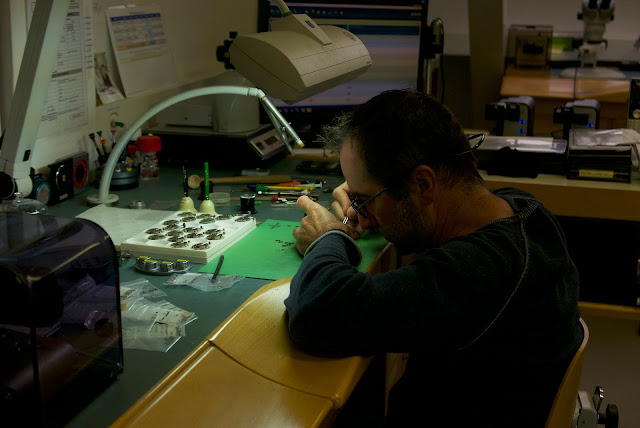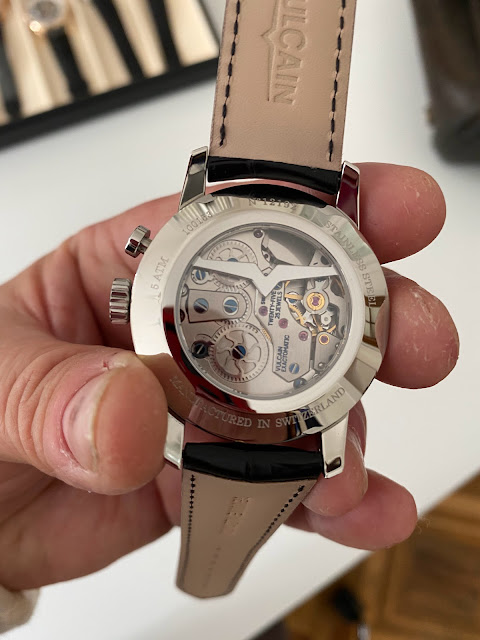Although Vulcain is no longer based in La Chaux-de-Fonds they have not abandoned the importance of having actual watch makers do actual watch making.
The villa that houses Vulcain’s HQ is not just a show piece or administration center. On the third floor is where all the assembly magic happens.
Now needless to say, alarm movements are not lying around thick on the ground, be they automatic or hand winding. You can’t pick up the phone and get a delivery from ETA or Sellita (at least insofar as an off the shelf solution). So if you want to make an alarm watch – or more importantly if you want to PRIMARILY make alarm watches, you’re going to have to (at least to some extent) do it yourself –
I was lucky to get to watch movements being assembled. I had noticed that while thee were a lot of the other things that I have seen in manufacturers like Girard-Perregaux and Corum, what I notably did not see at Vulcain were machines for milling movement parts. Carla Duarte explained to me that the components for the movements are all “made to order” and delivered to Vulcain’s atelier in Le Locle, where the alarm enabled movements are assembled one by one right there. And in truth this makes quite a bit of sense. Rather than investing a crazy amount of money for machinery to produce (admittedly) a relatively small number of movements, Vulcain has taken the very sane, very rational approach of working with partners who can machine the individual components, and deliver them. The very talented watch makers at Vulcain take these individual parts, and bring them together for the complete movement.
And this is a part of what makes what Vulcain is doing now so special. Going from this –
to this –
And finally to this –
So this is the present of Vulcain. Tune in next time where we take one last look around the “Vulcain Villa” and take in some of the rich history surrounding the brand.
Until then – Tempus Fugit!








